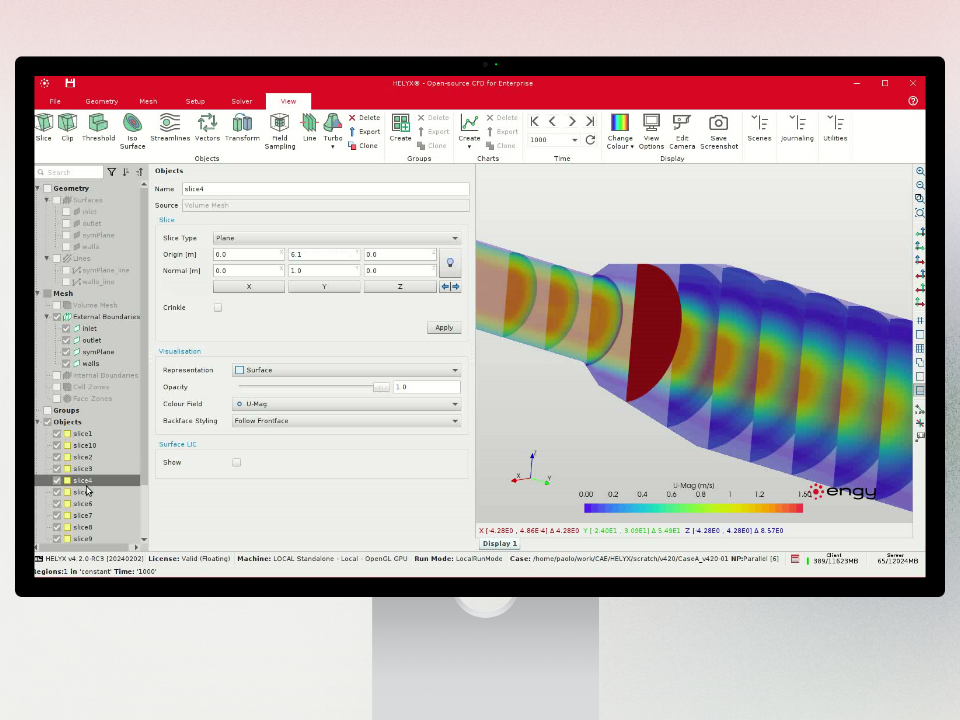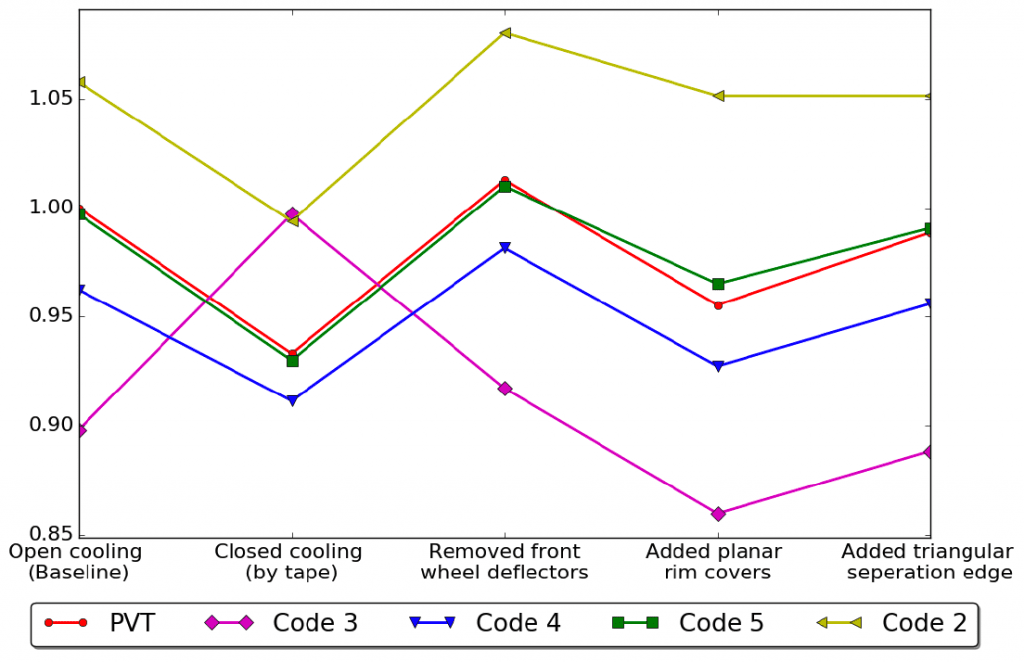The open-source software movement has transformed the technology sector over the last few decades and now underpins the majority of programs used by industry. The latest reports show that 77% of the source code in today’s software tools originates from open-source and over 90% of companies are currently using open-source code, with 79% expecting this to increase.
So, why are companies shifting to open-source and what advantages can it bring to Computational Fluid Dynamics (CFD)?
What Is Open-Source Software?
Open-source software gives users the freedom to access the source code. Whereas closed source, or proprietary software restricts access to the original authors. Consequently, users can delve into the inner workings of the code and understand the algorithms. They can also identify any issues which can then be resolved. This approach gives full transparency to the user, allowing them to build trust in the accuracy and reliability of the software.
An Introduction To Open-Source CFD Software
The majority of open-source CFD software packages are based on an open-source C++ code called OpenFOAM. This was originally developed in 1989 and released to the public in 2004 under the GNU General Public License (GPL) which allowed users to access, modify and redistribute the source code, at no cost.

This open access philosophy makes open-source CFD software a flexible and trustworthy simulation tool that companies can utilise to run accurate and reliable simulations at scale. Users are no longer dependent on a single vendor or constrained by licenses. Instead, they have the freedom to innovate based on technical merit rather than being limited by contractual obligations.
Simultaneous Simulations
One of the main benefits of open-source CFD software is scalability. Users can run multiple cases at the same time, on an unlimited number of cores, without having to pay for additional licenses. This not only boosts productivity but also allows users to reach the optimum solution much faster.
For example, if you want to investigate 20 different variations of a particular project, the licensing restrictions of proprietary software means you would have to run one simulation at a time. Waiting for the results of these 20 simulations before moving on to the next stage is extremely inefficient.
However, with open-source software, these simulations can run simultaneously overnight, so the results are ready the next morning. This not only saves time, but also helps users deliver faster results to their customers.
Full Transparency
The freedom to access the source code gives users the opportunity to investigate and verify the methodologies employed in the software. They can also spot any potential errors or inefficiencies and correct them. This not only improves the overall accuracy and robustness of simulations, but also builds confidence in the results.

Cost Effective CFD
With proprietary software, if you want to run simulations on several cores, you will most likely have to purchase multiple licenses which can become expensive. However, the scalability of open-source CFD software means you can scale much more cost effectively.
‘Let’s say you have already invested in the hardware for 64 computer cores,’ explains Francisco Campos, Co-Founder at ENGYS. ‘If you have paid for a standard license for a proprietary CFD package you will only be able to use around 4 of those cores at the same time.
‘But if you want to use the other cores, you will have to pay for additional HPC licenses. Whereas, with open-source CFD software, you can utilise all your cores at the same time at no extra cost. So in the long run, it works out as a much cheaper investment.’
Customisable Code
Users can also modify the source code to suit the requirements of specific use cases or clients. This flexibility means they can deliver a more comprehensive analysis to their customers and target business from a wider variety of sectors.
HELYX and ELEMENTS: Open-Source CFD Software Solutions
Although OpenFOAM is a powerful foundation for open-source technology, as a stand-alone CFD software, it does have some downsides. Firstly, it requires a significant amount of experience to set up and run accurate simulations. It’s code-orientated interface and lack of GUI’s makes it difficult to use and its limited post-processing capabilities means that analysing results becomes extremely time consuming.
Consequently, ENGYS have developed a suite of CFD software products that combines the open-source benefits of OpenFOAM with the reliability and support of commercial software into one easy-to-use package.
‘We have not only enhanced the original code and developed more stable solvers, but also added a range of features such as automatic meshing and topology optimisation,’ says Campos. ‘We’ve packaged this together with intuitive user interfaces and comprehensive support so that anyone can run CFD simulations and trust their results – no matter how much aerodynamic experience they have.’
HELYX is a comprehensive open-source CFD software that allows companies to accurately model fluid dynamics and optimise designs for a wide variety of applications ranging from buildings to turbomachinery. While ELEMENTS has been specifically tailored for vehicle design, bridging the gap between stylists and engineers in the automotive industry. Both software’s have been used by many companies to boost performance and improve efficiency of designs, delivering a cost effective and efficient solution for their customers. ELEMENTS is currently used by 60% of the Formula 1 grid, was selected by Volvo to conduct CFD simulations and also helped design the world’s most aerodynamic travel trailer. While HELYX analysed the effect of 36 different wind directions on an urban microclimate and identified the best HVAC system to reduce the spread of illnesses in classrooms.
‘The scalability [of ENGYS software] has significantly reduced project time and improved the accuracy of our predictions,’ explains Alysson Dantas, Process Engineer of engineering firm Legasys who recently switched to HELYX CFD software. ‘We can run multiple simulations simultaneously, exploring a wider range of parameters and optimise our solutions.’
Open-Source vs Proprietary CFD Software?
There have been several benchmark studies comparing the accuracy, reliability and speed of open-source and proprietary software, with the majority showing that open-source software matches, or in some cases, exceeds the performance of proprietary packages.
One particular study was conducted by automotive manufacturer Volvo, who benchmarked 5 different CFD codes against wind tunnel data for several of its vehicles. The delta drag and lift forces were compared and in each case, ELEMENTS (code 5) showed the strongest correlation with wind tunnel results and was therefore chosen by Volvo as one of its CFD tools.

Conclusion
Overall, open-source software such as HELYX and ELEMENTS brings an array of benefits to CFD simulations:
- Run multiple simulations simultaneously
- Unlimited number of cores
- No additional HPC license costs
- Access to the source code
- Full transparency
- Code Customisation
- Premier support
This makes open-source CFD software the ideal solution for companies to accelerate development times, increase efficiency and deliver more accurate results to their customers for much less cost than proprietary software.
If this sounds like something your company could benefit from, then click below to speak to one of our advisors who will be happy to answer your questions.


